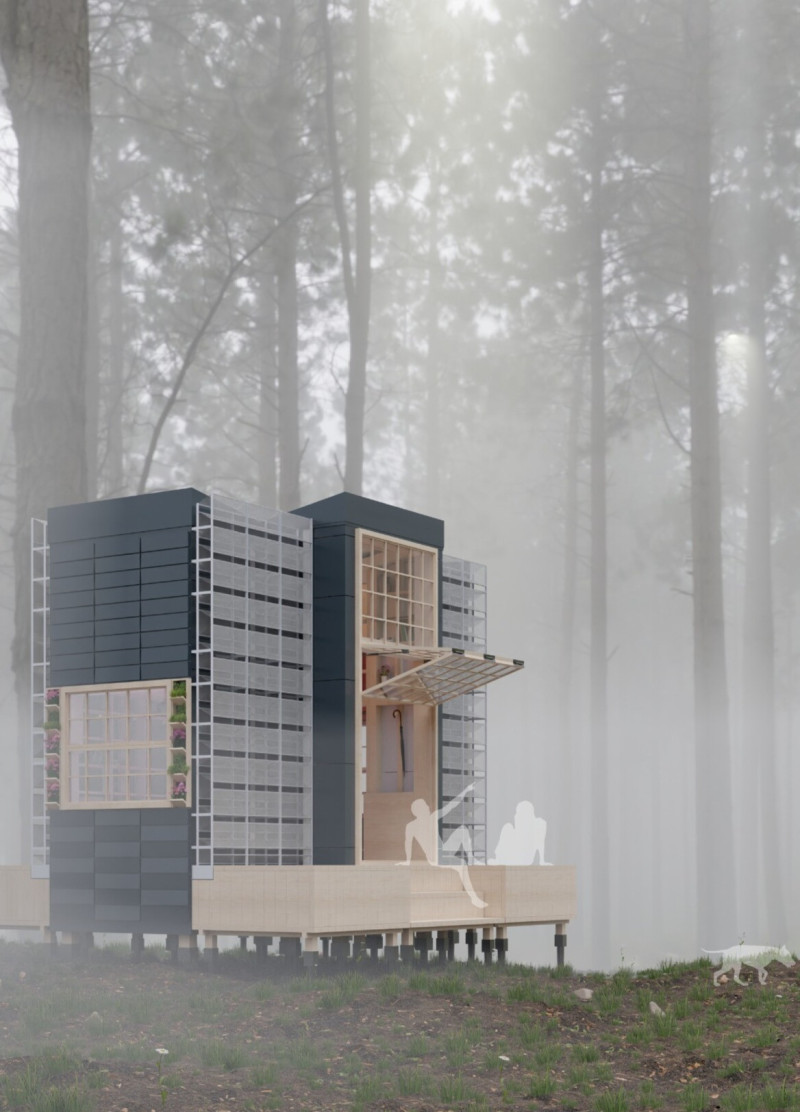5 key facts about this project
Upon first glance, one is struck by the seamless integration of the structure within the landscape. The design features a careful consideration of its geographical context, ensuring that the building not only coexists with its environment but also contributes positively to it. The architectural layout encourages a flow of movement that enhances accessibility and connectivity, inviting users to engage with both the interior and exterior spaces. Large glass panels abound, allowing natural light to flood the interior while offering sweeping views of the surrounding area, thereby blurring the lines between indoor and outdoor living.
Central to the architectural concept are the varied functional spaces tailored to meet the diverse needs of its users. These spaces include open-plan areas that can adapt to different activities, reflecting the modern trend of multifunctional environments. The design thoughtfully incorporates both communal and private spaces, ensuring that individuals and groups have the appropriate settings to work, relax, and interact. The careful zoning of these spaces is evident in the clear transitions and thoughtful arrangements, which promote a sense of order despite the open nature of the layout.
Materiality plays a pivotal role in the project’s overall success, with a careful selection of materials that reinforce the architectural vision while also responding to environmental considerations. The use of sustainably sourced wood, steel, and concrete is prominent throughout the design, creating a tactile and inviting atmosphere. These materials are not only aesthetically pleasing but also serve functional purposes, contributing to the building's durability and energy efficiency. Complementing these core materials are natural textures, such as stone and plant life, which enhance the sensory experience of the space and underscore a connection with nature.
One of the unique design approaches applied in this project is the emphasis on passive design strategies aimed at maximizing energy efficiency. The strategic placement of windows and overhangs provides optimal daylighting and natural ventilation, reducing the reliance on artificial lighting and mechanical systems. This consideration of eco-friendly design is not merely a trend but a fundamental aspect that influences overall user comfort and environmental stewardship.
Another notable feature of this architectural design is its engagement with the community. The layout promotes social interaction through communal areas and outdoor spaces that encourage gatherings and events. This focus on public accessibility reinforces the idea that architecture can and should enhance community interaction, creating a sense of belonging among users. The thoughtful integration of landscaping, including native plants and communal gardens, further augments the aesthetic appeal while supporting local biodiversity.
The design outcomes reflect a comprehensive understanding of contemporary needs, prioritizing sustainability, functionality, and community connectivity. Each aspect of the project has been meticulously crafted to ensure that it not only meets the immediate requirements of its users but also contributes to the broader context in which it exists. This architectural endeavor is a testament to the principles of design that emphasize the importance of harmony between built environments and their natural settings.
In summary, this architectural project serves as a commendable example of thoughtful design that embraces modernity while respecting the environment. The interplay of materials, the functional layout, and the community-focused approach culminate in a striking addition to the architectural landscape. Those interested in delving deeper into the architectural plans, sections, designs, and ideas behind this project are encouraged to explore the detailed presentation available. By doing so, one can gain a comprehensive understanding of how this project not only meets the needs of its users but also sets a standard for future architectural endeavors.


























